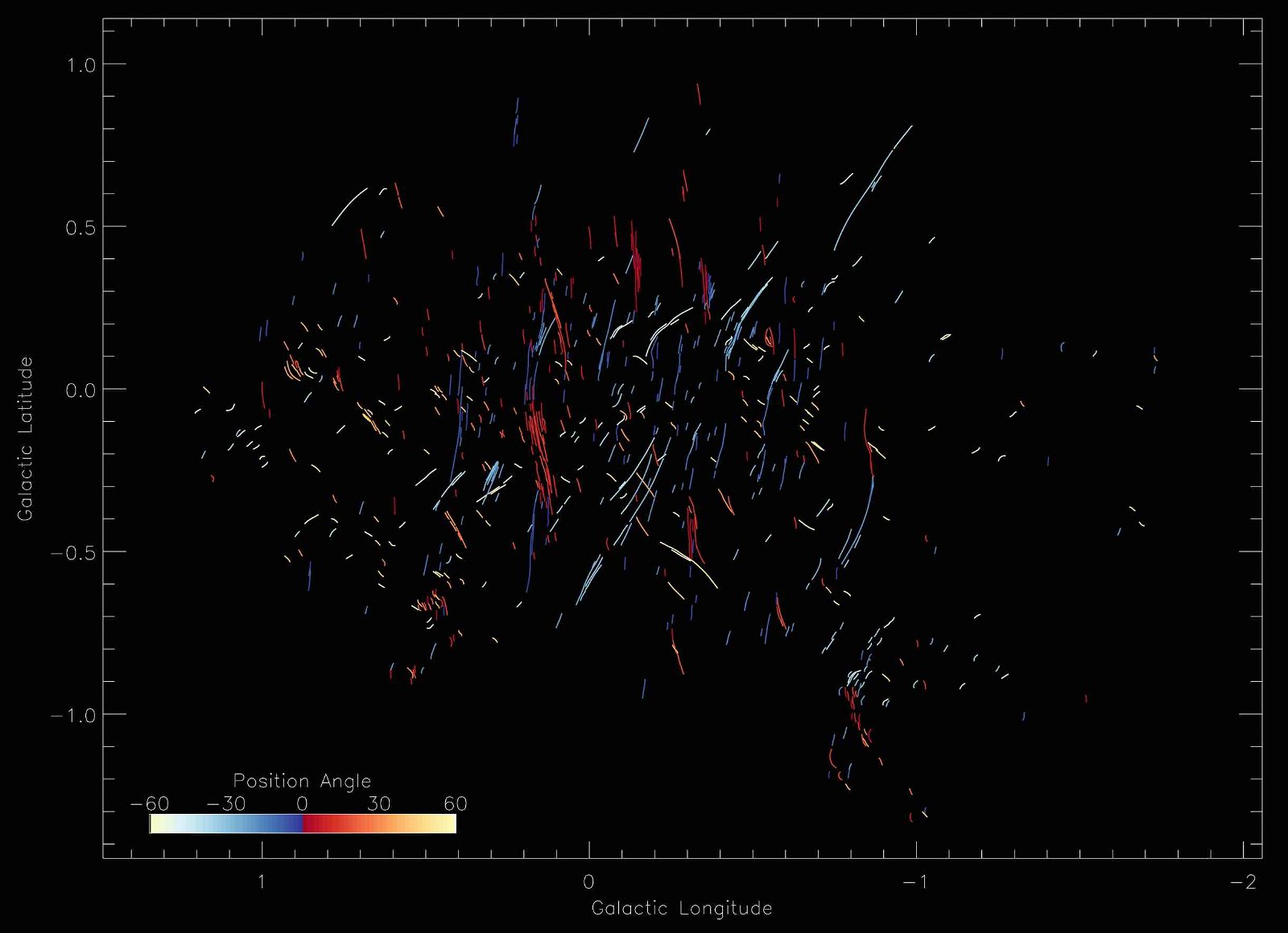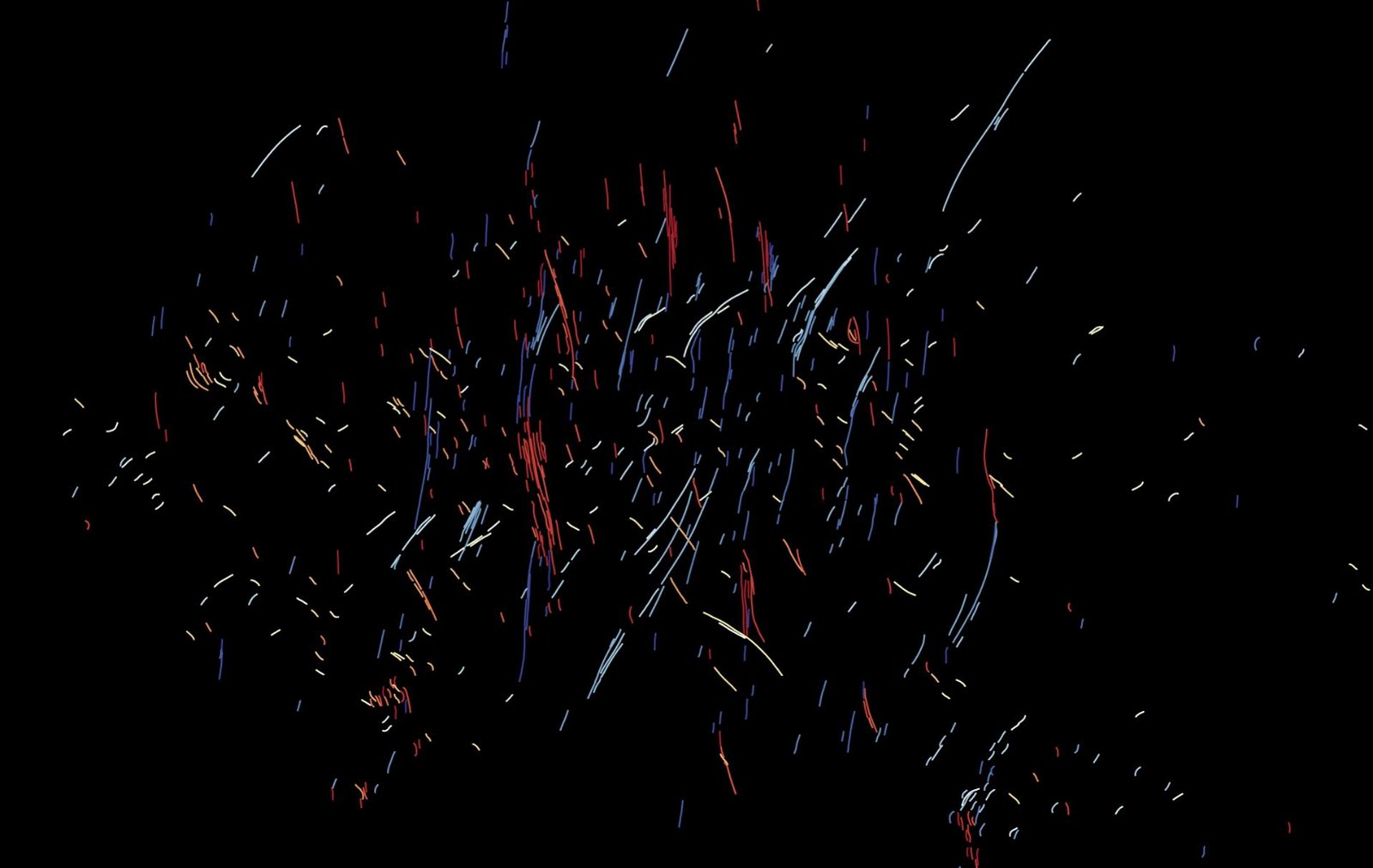Located at the heart of the Milky Way, researchers say they have discovered a series of unusual filament structures that provide new insights into a supermassive black hole at the center of our galaxy.
Sagittarius A*, the Milky Way’s resident supermassive black hole, is located close to the border between the constellations Sagittarius and Scorpius. Recognized by astronomers for being an extremely compact but also very bright radio source, its radio signatures were first identified in the mid-1950s.
Now, an international team of astrophysicists says the discovery of a series of massive, one-dimensional filament structures near Sagittarius A* represents the discovery of “something wholly new,” according to a statement released by Northwestern University last Friday.
In the past, similar odd structures have been detected by astrophysicists. Northwestern Professor Farhad Yusef-Zadeh, with the university’s Department of Physics and Astronomy, had been among those who have made such discoveries as far back as the 1980s, involving huge, one-dimensional filaments in vertical orientation around Sagittarius A*.
However, according to new research, an entirely new group of horizontal filaments has now been discovered around the black hole.
The new population of structures are oriented radially, spreading outward from Sagittarius A in all directions, similar to the way rays of light beam outward from the Sun. The new discovery was made possible in part by significant improvements in radio astronomy that have taken place in recent years, in particular those occurring at locations like the South African Radio Astronomy Observatory with its MeerKAT telescope.


Using imagery collected by MeerKAT, Yusef-Zadeh and the international team of collaborators developed a method of removing background noise and thereby succeeded in detecting the new bunches of horizontally-oriented filaments.
“The new MeerKAT observations have been a game changer,” Yusef-Zadeh said, noting that the isolation of these structures from the MeerKAT imagery had been “really a technical achievement from radio astronomers.”
Despite the new capabilities that led to the detections, Yusef-Zadeh said it was surprising to discover a completely new population of structures, which are all oriented in the direction of the black hole.
“I was actually stunned when I saw these,” Yusef-Zadeh said in a statement, adding that he and his research team were required to conduct a significant amount of work in order to verify the discovery.
After checking their findings, Yusef-Zadeh said the filaments were not randomly distributed, but instead seem to be intricately tied to the outflow coming from the black hole. He says that further studies of these structures could help the team unravel further clues about the spin of the black hole, as well as the orientation of its massive accretion disk.
“It is satisfying when one finds order in [the] middle of a chaotic field of the nucleus of our galaxy,” he added.
Yusef-Zadeh and his team’s study detailing the recent discoveries appeared in The Astrophysical Journal Letters last Friday.
Micah Hanks is the Editor-in-Chief and Co-Founder of The Debrief. He can be reached by email at micah@thedebrief.org. Follow his work at micahhanks.com and on Twitter: @MicahHanks.

